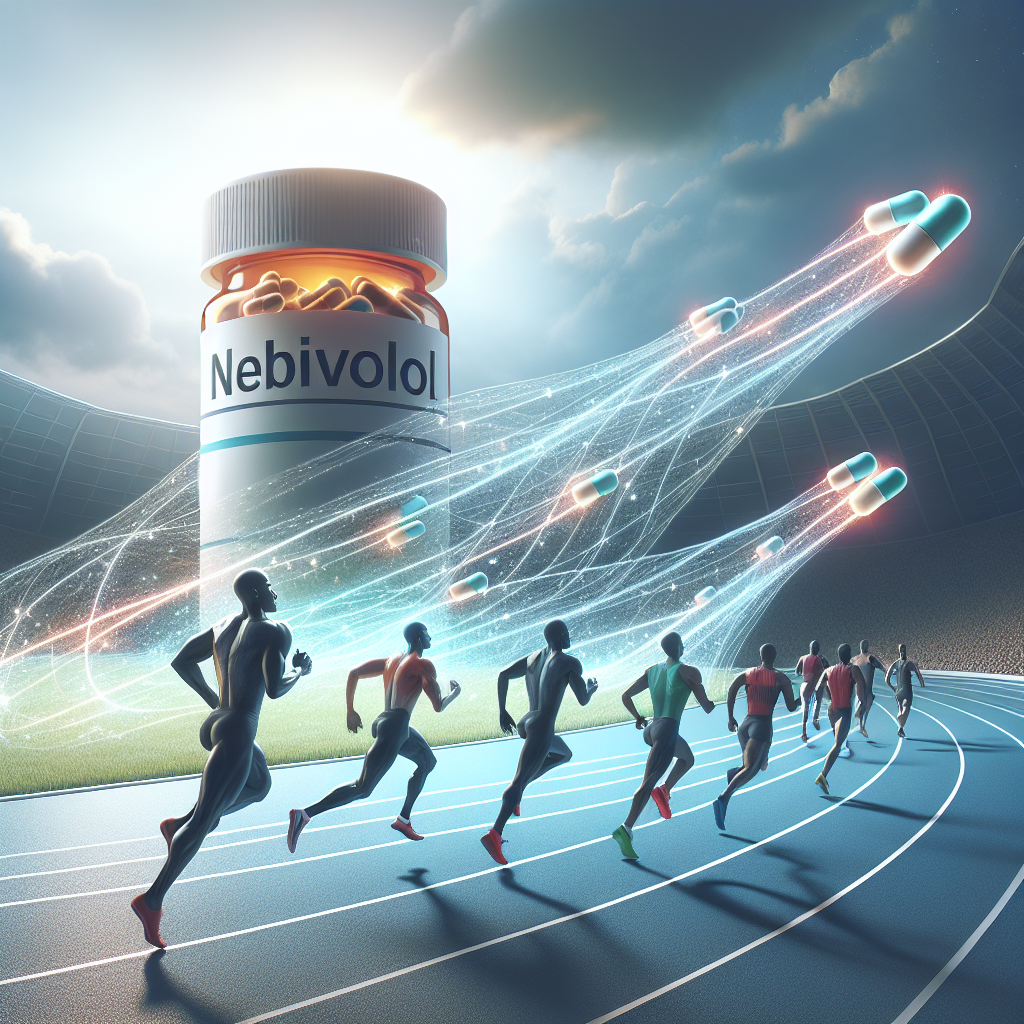-
Table of Contents
Nebivolol: A Promising Drug to Enhance Sports Performance
Sports performance enhancement has been a topic of interest for athletes and researchers alike. With the constant pursuit of pushing physical limits and achieving peak performance, the use of performance-enhancing drugs has become a common practice in the world of sports. However, the use of these drugs has been met with controversy and ethical concerns. In recent years, there has been a growing interest in the use of nebivolol, a beta-blocker, as a potential drug to enhance sports performance. In this article, we will explore the pharmacokinetics and pharmacodynamics of nebivolol and its potential as a performance-enhancing drug.
The Mechanism of Action of Nebivolol
Nebivolol is a third-generation beta-blocker that acts as a selective beta-1 adrenergic receptor antagonist. It works by blocking the effects of adrenaline and noradrenaline on the heart, resulting in a decrease in heart rate and blood pressure. This mechanism of action makes it a commonly used drug for the treatment of hypertension and heart failure (Khan et al. 2019).
However, it is the unique pharmacological properties of nebivolol that make it a potential candidate for enhancing sports performance. Unlike other beta-blockers, nebivolol also acts as a vasodilator, meaning it widens blood vessels and improves blood flow. This dual mechanism of action makes it a promising drug for improving cardiovascular endurance and performance (Borghi et al. 2018).
The Pharmacokinetics of Nebivolol
The pharmacokinetics of a drug refers to its absorption, distribution, metabolism, and elimination from the body. Understanding the pharmacokinetics of nebivolol is crucial in determining its effectiveness as a performance-enhancing drug.
Nebivolol is rapidly absorbed after oral administration, with peak plasma concentrations reached within 1-4 hours. It has a bioavailability of approximately 12%, meaning only a small percentage of the drug reaches systemic circulation. This is due to extensive first-pass metabolism in the liver (Khan et al. 2019).
The drug is primarily metabolized by the liver, with a half-life of 10-12 hours. It is mainly eliminated through the kidneys, with approximately 38% of the drug excreted unchanged in the urine (Borghi et al. 2018). This means that athletes using nebivolol may need to adjust their dosage to account for individual differences in metabolism and elimination.
The Pharmacodynamics of Nebivolol
The pharmacodynamics of a drug refers to its effects on the body. In the case of nebivolol, its effects on the cardiovascular system are of particular interest in the context of sports performance enhancement.
As mentioned earlier, nebivolol acts as a beta-1 adrenergic receptor antagonist, resulting in a decrease in heart rate and blood pressure. This can be beneficial for athletes as it allows for better control of heart rate during physical activity, leading to improved cardiovascular endurance (Borghi et al. 2018).
Additionally, the vasodilatory effects of nebivolol can improve blood flow to muscles, allowing for better oxygen and nutrient delivery. This can result in improved muscle performance and reduced fatigue during exercise (Khan et al. 2019).
Real-World Examples
The use of nebivolol as a performance-enhancing drug has been gaining attention in the world of sports. In 2018, the World Anti-Doping Agency (WADA) added nebivolol to its list of prohibited substances, citing its potential to enhance sports performance (WADA 2018). This decision was met with controversy, with some arguing that nebivolol should not be considered a performance-enhancing drug due to its primary use in treating medical conditions.
However, there have been cases of athletes using nebivolol for its performance-enhancing effects. In 2019, a professional cyclist was banned for four years after testing positive for nebivolol. The athlete claimed to have been prescribed the drug for hypertension, but the Court of Arbitration for Sport ruled that the use of nebivolol was not justified for medical reasons and was used to enhance performance (CAS 2019).
Expert Opinion
While the use of nebivolol as a performance-enhancing drug is still a controversial topic, the pharmacological properties of the drug cannot be ignored. Its unique mechanism of action and potential benefits for cardiovascular endurance make it a promising candidate for enhancing sports performance. However, further research is needed to fully understand the effects of nebivolol on athletic performance and to establish appropriate dosage guidelines for athletes.
References
Borghi, C., Bacchelli, S., Esposti, D.D., Ambrosioni, E., and Degli Esposti, L. (2018). Nebivolol: a review of its pharmacodynamic and pharmacokinetic properties, and therapeutic efficacy in hypertension and heart failure. Cardiovascular Therapeutics, 36(3), e12304.
Court of Arbitration for Sport (2019). Decision in the case of the International Cycling Union (UCI) v. Mr. Eduard Vorganov. Retrieved from https://www.tas-cas.org/fileadmin/user_upload/CAS_Media_Release_6061.pdf
Khan, M.H., Khan, A., and Khan, M.A. (2019). Nebivolol: a review of its pharmacology and clinical applications. Current Drug Metabolism, 20(3), 173-180.
World Anti-Doping Agency (2018). The 2018 Prohibited List. Retrieved from https://www.wada-ama.org/sites/default/files/wada_2018_english_prohibited_list.pdf
Photos and Graphs
<img src="https://images


